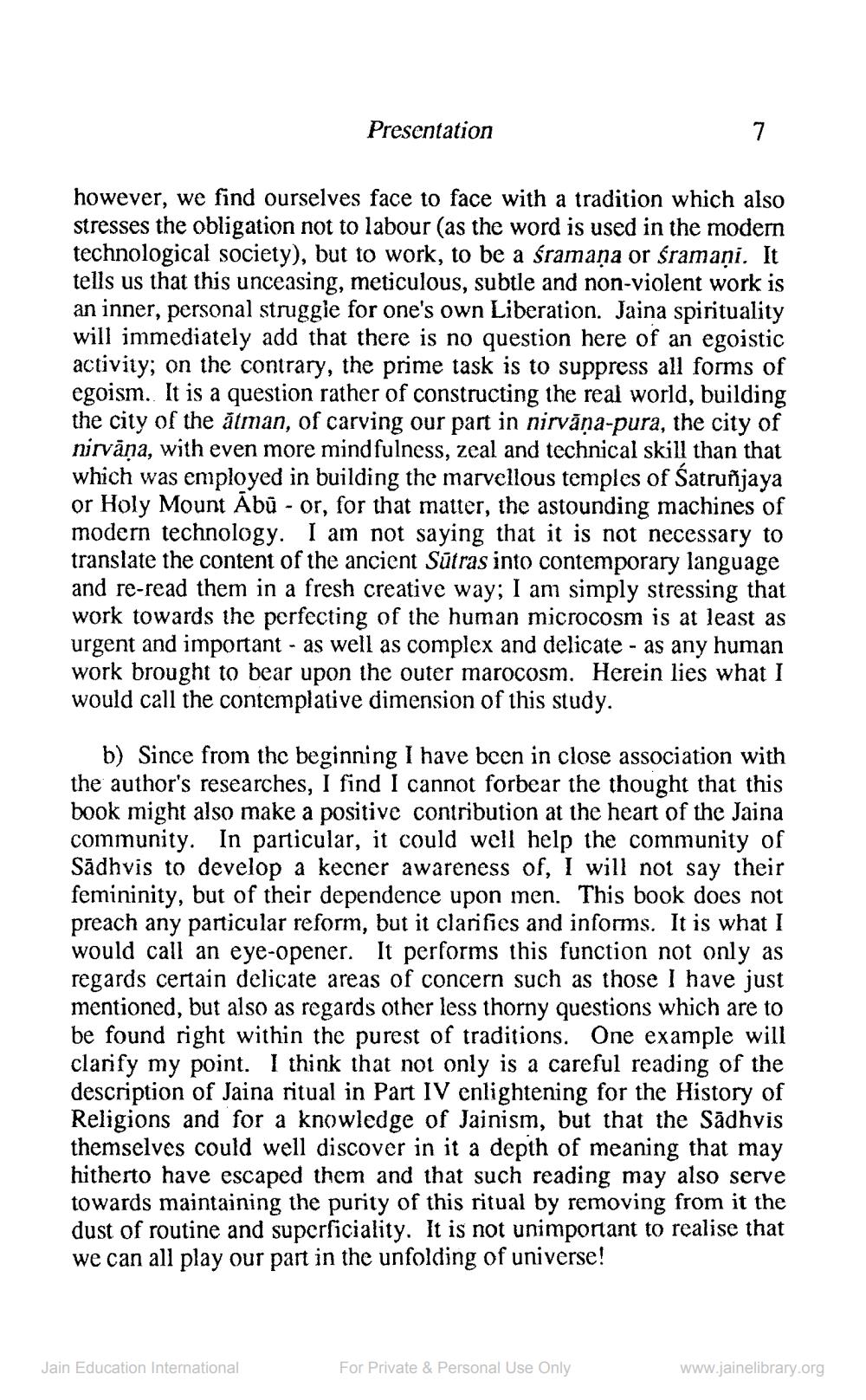________________
Presentation
however, we find ourselves face to face with a tradition which also stresses the obligation not to labour (as the word is used in the modern technological society), but to work, to be a śramaņa or śramaņi. It tells us that this unceasing, meticulous, subtle and non-violent work is an inner, personal struggle for one's own Liberation. Jaina spirituality will immediately add that there is no question here of an egoistic activity; on the contrary, the prime task is to suppress all forms of egoism. It is a question rather of constructing the real world, building the city of the atman, of carving our part in nirvana-pura, the city of nirvāņa, with even more mindfulness, zeal and technical skill than that which was employed in building the marvellous temples of Satrunjaya or Holy Mount Abū - or, for that matter, the astounding machines of modern technology. I am not saying that it is not necessary to translate the content of the ancient Sūtras into contemporary language and re-read them in a fresh creative way; I am simply stressing that work towards the perfecting of the human microcosm is at least as urgent and important - as well as complex and delicate - as any human work brought to bear upon the outer marocosm. Herein lies what I would call the contemplative dimension of this study.
b) Since from the beginning I have been in close association with the author's researches, I find I cannot forbear the thought that this book might also make a positive contribution at the heart of the Jaina community. In particular, it could well help the community of Sādhvis to develop a kecner awareness of, I will not say their femininity, but of their dependence upon men. This book does not preach any particular reform, but it clarifies and informs. It is what I would call an eye-opener. It performs this function not only as regards certain delicate areas of concern such as those I have just mentioned, but also as regards other less thorny questions which are to be found right within the purest of traditions. One example will clarify my point. I think that not only is a careful reading of the description of Jaina ritual in Part IV enlightening for the History of Religions and for a knowledge of Jainism, but that the Sādhvis themselves could well discover in it a depth of meaning that may hitherto have escaped them and that such reading may also serve towards maintaining the purity of this ritual by removing from it the dust of routine and superficiality. It is not unimportant to realise that we can all play our part in the unfolding of universe!
Jain Education International
For Private & Personal Use Only
www.jainelibrary.org




